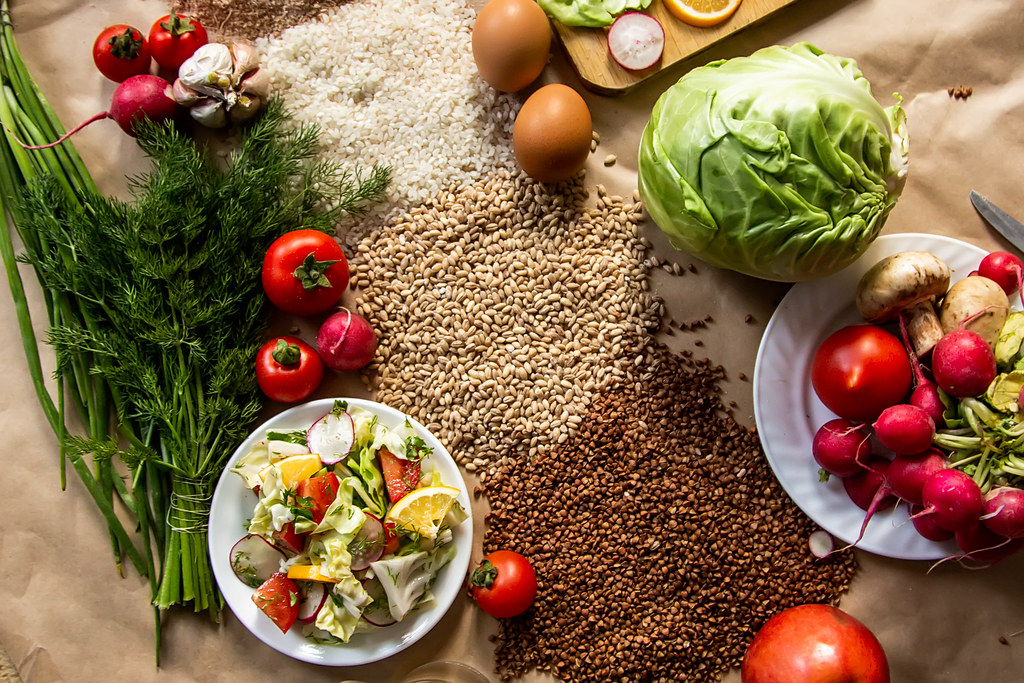The word ‘vegan’ used to have something of a negative connotation to it. What was once dismissed as a fad, or an extreme choice of apparently giving up tasty food, is now a mainstream trend. Veganism is no longer a ridiculed concept; it’s associated with numerous health benefits, tapping into the eco-conscious state of the world, and a progressive movement towards a greener way of life. Businesses really can’t afford to ignore it; between 2016 and 2017, plant-based food sales in the UK increased by 1,500%. Even within the home, we’re often catering for vegan relatives and friends.
The Vegan Society released research regarding veganism in the UK, revealing that:
- 56% of adults in the UK practice vegan buying behaviours
- 19% have cut down on buying meat and are checking cosmetics and toiletries for animal-testing
- 13% actively choose meat-free or dairy-free meals when eating out
- 51% are happy to see vegan food in shops and restaurants
It seems that, even for those of us who aren’t adopting a strictly vegan diet (a ‘flexitarian’, as it’s known), we’re all becoming more mindful of the benefits and are willing to try vegan options. Perhaps because of this, the mindset towards vegans has drastically improved, with 43% of people saying they respected vegans for their lifestyle.
But is it really just eco-awareness and health-seeking that has caused the rise of veganism’s popularity? Looking at the results of 2018’s Veganuary, a movement that challenges people to sign up for a month of vegan eating, the top reason for people signing up was animal rights concerns (43%). This was followed by 39% of people who signed up for health reasons, and 10% who said it was for environmental reasons.
But, perhaps the reason for going vegan is something a little more vain, suggests The Independent, who noted that the increase of Google searches of the word ‘vegan’ has grown in line with searches for ‘Instagram’. In a world where we love to take photos of our meals and share them on social media, it’s not difficult to believe that Instagram has helped circulate numerous brightly-coloured vegan dishes to help improve its previously ill-held reputation of being nothing but leaves.
Indeed, Vegan Food & Living offered up an array of vegan food trends for 2018, and none of them could be considered ‘rabbit food’:
- Veggie chips, such as parsnip chips and sweet potato chips, make for a healthier option than normal potato.
- Edible flowers, to make your meal Instagram-worthy!
- Vegan desserts, bringing back ice-cream and cakes in vegan-friendly ways. Ben and Jerry’s have released three delicious vegan-friendly ice creams: Chocolate Fudge Brownie, Chunky Monkey, and Peanut Butter and Cookies are all sure to be a hit with vegans and non-vegans alike!
- Fermented foods, while they might not conjure the most delicious image to mind, are coming into food trends in a big way. Think colourful kimchi and nutty-flavoured tempeh.
The next stage is for businesses and restaurants to open more food-to-go options for vegans. A recent survey found that 91% of vegans are having a tough time finding to-go meal options. The market is certainly there, and restaurants and supermarkets are slowly picking up on the potential gains to be made by catering to veganism.
On a personal level, switching to a vegan diet can be wholly beneficial too. A new study was brought to the public eye by The Guardian, outlining that the “five-a-day” notion for fruit and vegetable consumption is, sadly, not entirely accurate. In fact, the study from the Imperial College London advises 10-a-day! The now-recommended 800g of fruit and veg daily would help reduce heart disease, strokes and premature deaths. Picking up a few vegan meals throughout the week, or switching to a vegan diet entirely, would certainly help hit this healthy target.
So, whether you’re interested in adopting a vegan lifestyle yourself, or want to dabble with being a ‘flexitarian’, you might be interested in growing your own vegetables rather than heading to the supermarket. Even a small garden can house a few home-grown herbs and fruits! Find some topsoil for sale and start cultivating your own supply of edible flowers or cucumbers for the freshest salad you’ll ever taste!
Don’t forget your proteins — a vegan diet has loads to choose from, and you can grow some in your garden alongside the veggies. Think beans and seeds, like sunflower seeds or soybeans.
Are you ready to embrace the vegan rising, or are you going to test the water first with a few meat-free, dairy-free choices? You’ll be pleasantly surprised by how far vegan cooking has come, and if nothing else, you’ll reap the many environmental and health benefits.
 Heart
Heart Haha
Haha Love
Love Wow
Wow Yay
Yay Sad
Sad Poop
Poop Angry
Angry

